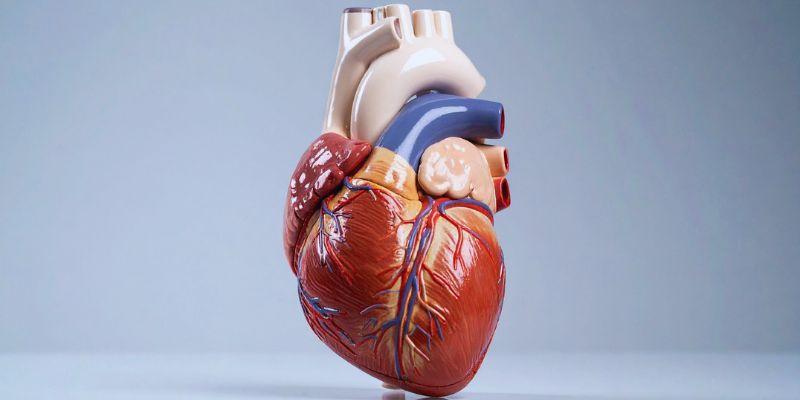Metabolic health is a measure of how efficiently the body converts food into energy, regulates blood sugar, and manages fat storage. The balance of hormones influences it, the responsiveness of cells to insulin, and the body’s ability to maintain stable energy levels. When this system begins to falter, the effects can be subtle at first but can progress into significant health concerns if left unaddressed.
Poor metabolic health is far more common than many realise. According to global health research, a large proportion of adults show at least one marker of metabolic dysfunction, often without knowing it. Detecting the warning signs early allows for timely intervention, reducing the risk of chronic conditions such as type 2 diabetes, heart disease, and metabolic syndrome.
The following are 5 clear indicators that metabolic health may require attention, along with proven, evidence-based strategies for improvement.
One of the earliest signals of metabolic decline is consistent fatigue, even after adequate rest. When the body’s cells become less responsive to insulin, glucose remains in the bloodstream rather than being efficiently transported into cells for energy. This results in fluctuating blood sugar levels, leaving individuals feeling drained and sluggish.
Low energy not only reduces productivity but also discourages physical activity, a key driver of healthy metabolism. Over time, this cycle can further impair insulin sensitivity and contribute to weight gain. If left unaddressed, persistent fatigue can evolve into chronic exhaustion, affecting overall quality of life. Restoring metabolic efficiency is essential for sustaining daily vitality and long-term health.

Unexpected weight gain, particularly around the midsection, is often a sign of impaired metabolic function. Central obesity—fat stored around the abdominal organs—is closely linked to insulin resistance. This form of fat is hormonally active, releasing inflammatory substances that interfere with normal metabolic processes.
In some cases, individuals may be consuming a reasonable number of calories yet still gain weight or find it extremely difficult to lose weight. It suggests that the issue lies not solely in calorie intake but in how the body processes and stores energy.
Strong cravings for sugary or refined carbohydrate-rich foods can indicate that the body’s blood sugar regulation system is under strain. Rapid spikes in blood sugar followed by sharp drops trigger the brain to seek quick sources of glucose, perpetuating a cycle of cravings and energy crashes.
These fluctuations do not just influence physical energy—they also impact mood and concentration. Irritability, anxiety, or difficulty focusing are common when blood sugar swings are frequent. Over time, this pattern can worsen insulin resistance and place additional pressure on the metabolic system.
Blood pressure, triglycerides, and cholesterol readings are important indicators of metabolic health. Insulin resistance can lead to an excess of circulating fats in the blood and promote sodium retention, both of which strain the cardiovascular system.
Even if no symptoms are present, elevated blood pressure or unfavourable cholesterol levels may point toward early metabolic dysfunction. Left unmanaged, these markers increase the risk of heart disease, stroke, and other complications.

A growing waistline is one of the clearest physical signs of declining metabolic health. Excess visceral fat—fat stored around the abdominal organs—acts as a metabolically active tissue, releasing compounds that interfere with insulin signalling and promote inflammation.
Unlike subcutaneous fat stored under the skin, visceral fat is strongly associated with a higher risk of metabolic syndrome and cardiovascular disease. Tracking waist measurements can be a useful tool for monitoring changes in metabolic status over time.
Metabolic health is the cornerstone of physical vitality, cognitive sharpness, and disease prevention. Recognising early warning signs—such as persistent fatigue, stubborn weight gain, sugar cravings, abnormal cardiovascular readings, and increased waist circumference—allows individuals to take proactive measures before serious conditions develop.
By adopting a balanced diet, engaging in regular physical activity, prioritising restorative sleep, managing stress, and staying hydrated, it is possible to restore metabolic function and protect long-term wellbeing. Safeguarding metabolic health today lays the foundation for a more energetic, resilient, and fulfilling future.
 TOP
TOP
If you still believe that women don’t get heart diseases or that only older people can have heart diseases, you are wrong
 TOP
TOP
How building wealth is possible at any age with practical strategies that focus on consistent habits, smart choices, and long-term thinking
 TOP
TOP
Start making the most of your 401(k) today and secure a stronger financial future. Learn how timing, employer matches, and smart contributions can improve your retirement
 TOP
TOP
How financial aid for college works—from grants and scholarships to loans and work-study programs. Get clear, practical guidance for every funding option
 TOP
TOP
Discover 5 unique horse races that take place around the world, blending speed, thrill, and stunning cultural locations.
 TOP
TOP
Discover how Easter is celebrated across countries, from egg rolling to water fights, offering joy through local traditions.
 TOP
TOP
Explore North Wales’ most breathtaking gardens, from serene floral paths to hillside greenery with sea views.
 TOP
TOP
Wondering if it’s the right time for a loan? Learn how rates, timing, and your finances impact the decision.
 TOP
TOP
Discover the top reasons to pay credit card bills on time and how it safeguards your credit, money, and peace of mind.
 TOP
TOP
Uncover the best experiences in Rome, Italy, with this essential guide. Walk through ancient ruins, explore piazzas, visit historic churches, and get to know the Eternal City at your own pace
 TOP
TOP
Discover the best places to stay in Nashville, from lively downtown hotels to charming neighborhood rentals. Explore top areas suited for music lovers, families, and anyone seeking the perfect Nashville experience
 TOP
TOP
Thinking about a lease buyout? Learn how to evaluate your options, compare costs, and decide whether keeping your vehicle is the right move. Understand the financial side before making your next step